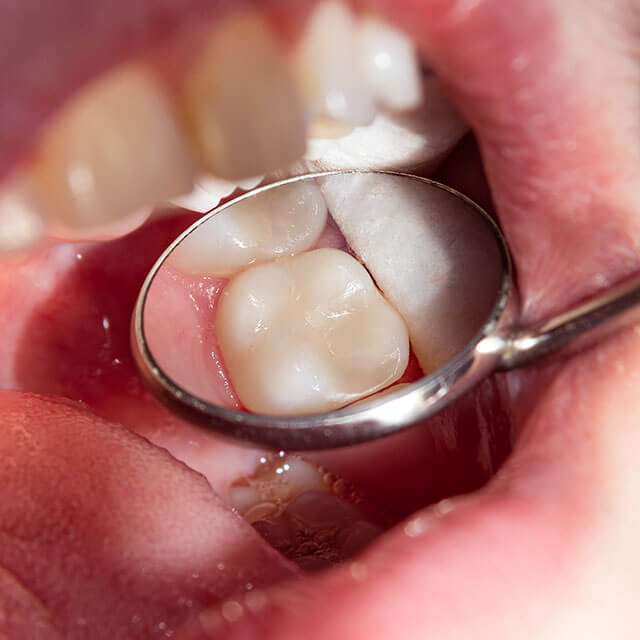Great staff. Son was in pain. This office got him taken care of Thank you!!
Katie R.
Maintaining a healthy smile is essential for overall oral health and well-being. While cavities can pose a threat to the integrity of our teeth, dental fillings are a reliable solution for restoring and protecting teeth affected by decay. Discover why Dr. Georgie Vargas at River Birch Dental is one of the best dentists in Centuria, WI, for restoring your beautiful smile. Call (715) 646-2161 to learn more.
 Composite resin fillings, also called tooth-colored fillings or white fillings, are a type of tooth-filling material made from resin combined with glass particles. This mixture creates a strong, durable material that can be shaped and polished to perfectly match the color of your natural teeth. Composite fillings are bonded directly to the natural tooth and structure, creating a tight seal that helps prevent future decay.
Composite resin fillings, also called tooth-colored fillings or white fillings, are a type of tooth-filling material made from resin combined with glass particles. This mixture creates a strong, durable material that can be shaped and polished to perfectly match the color of your natural teeth. Composite fillings are bonded directly to the natural tooth and structure, creating a tight seal that helps prevent future decay.
There are several benefits of tooth-colored fillings, such as:
 Ultimately, the best type of filling for you depends on several factors, including the location and severity of the cavity, your desired level of aesthetics, and your budget. Here’s a quick guide to help you decide:
Ultimately, the best type of filling for you depends on several factors, including the location and severity of the cavity, your desired level of aesthetics, and your budget. Here’s a quick guide to help you decide:
During your dental consultation appointment, Dr. Vargas will thoroughly examine your teeth and discuss all your options. She’ll consider your situation and preferences to recommend the most appropriate type of filling for a long-lasting, healthy smile.
Composite fillings are a versatile dental restoration, but they might not be suitable for everyone. Here’s a breakdown of who is a good candidate for composite fillings:
In some cases, a tooth may not be a candidate for a composite resin filling. Here are some reasons why:

Local anesthesia ensures a comfortable experience throughout the procedure. Once we’re sure the area is properly numbed, Dr. Vargas will remove the decayed tooth structure using specialized dental tools. Once cleaned, the tooth surface is prepped with a conditioning agent to create a strong bond with the filling material.
Dr. Vargas skillfully applies the composite material in thin layers to the cavity. This allows for precise shaping and ensures a natural-looking restoration. She will carefully mold the composite to perfectly match the surrounding tooth anatomy for optimal functionality. Once the composite resin is shaped, a special light is used to activate the curing process, hardening the composite material into a durable restoration.
After hardening, Dr. Vargas trims and polishes the filling to achieve a natural look and smooth feel that seamlessly blends with your surrounding teeth. This step ensures a comfortable bite and prevents any irritation to your tongue or cheek.
Finally, Dr. Vargas will check your bite to ensure proper alignment and comfortable chewing. She will also provide detailed aftercare instructions to optimize the longevity of your composite filling. These instructions typically involve maintaining good oral hygiene practices, dietary recommendations for the first few days, and the importance of scheduling regular dental checkups.
Following your composite filling placement, it’s essential to practice good oral hygiene to ensure the longevity of the restoration. Here are some essential aftercare tips from Dr. Vargas:
Great staff. Son was in pain. This office got him taken care of Thank you!!
Katie R.
Always Very attentive and informative. They go above and beyond to make the dental experience comfortable for my children too!
Crystal H.
A very comfortable and relaxed atmosphere with a great staff.
Shanna H.
Top-quality care, provided by super friendly doctors, hygienists, and staff. They make visiting the dentist a pleasure!
Jeremy J.
The folks here make you feel welcomed from the moment you walk through their doors. Started coming here for my eldest boy for teeth correction, now, our whole family come here. For the first time in my 49 years, I’m no longer embarrassed to smile.
Penny
Dental fillings are durable and long-lasting. The lifespan of a dental filling also depends on various factors, including the type of filling material used and how well you take care of your oral health. On average, dental fillings can last anywhere from five to 15 years. However, with proper oral hygiene practices and regular dental check-ups, fillings can last even longer.
Dental fillings themselves are not typically painful because dentists use local anesthesia to numb the area around the tooth. You may experience some mild discomfort or sensitivity after the procedure, but this can be managed with over-the-counter pain medication.
To prevent cavities, here are some key practices: